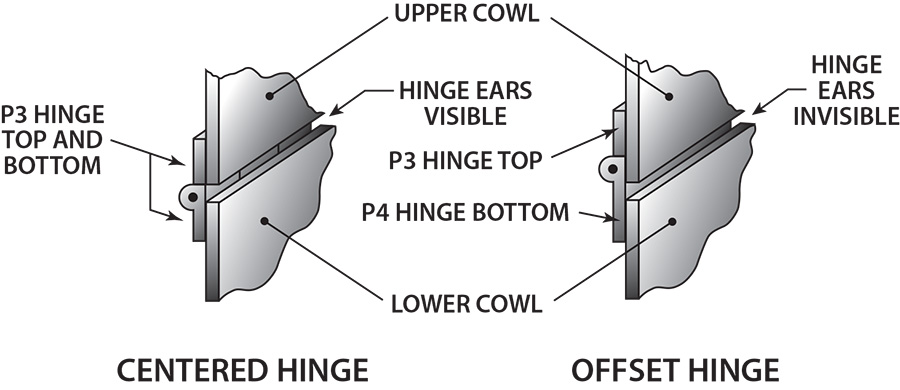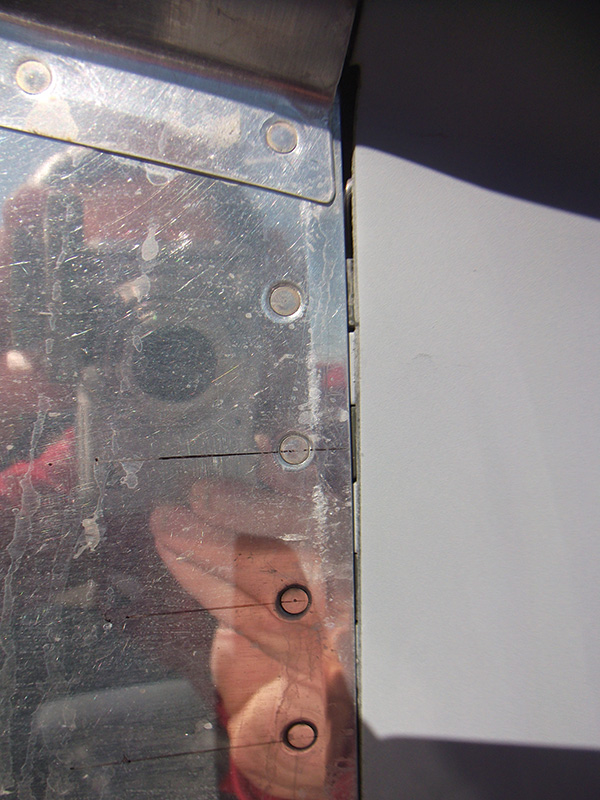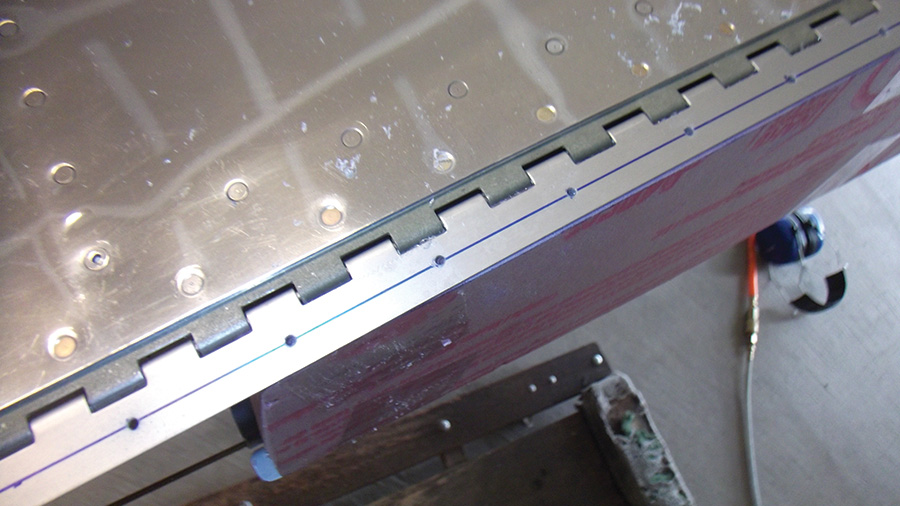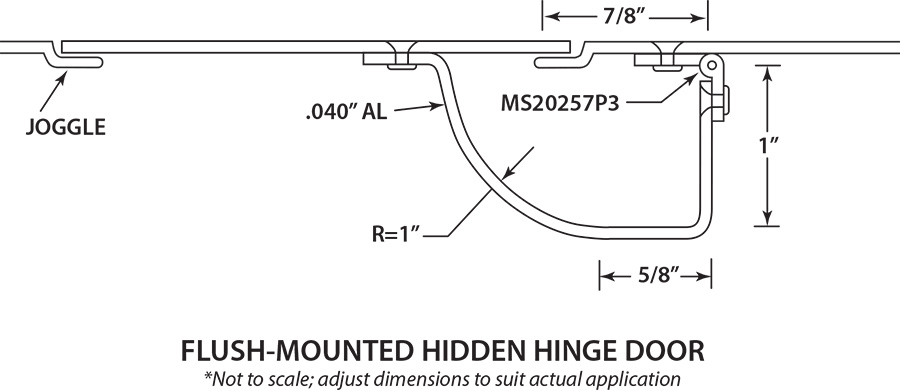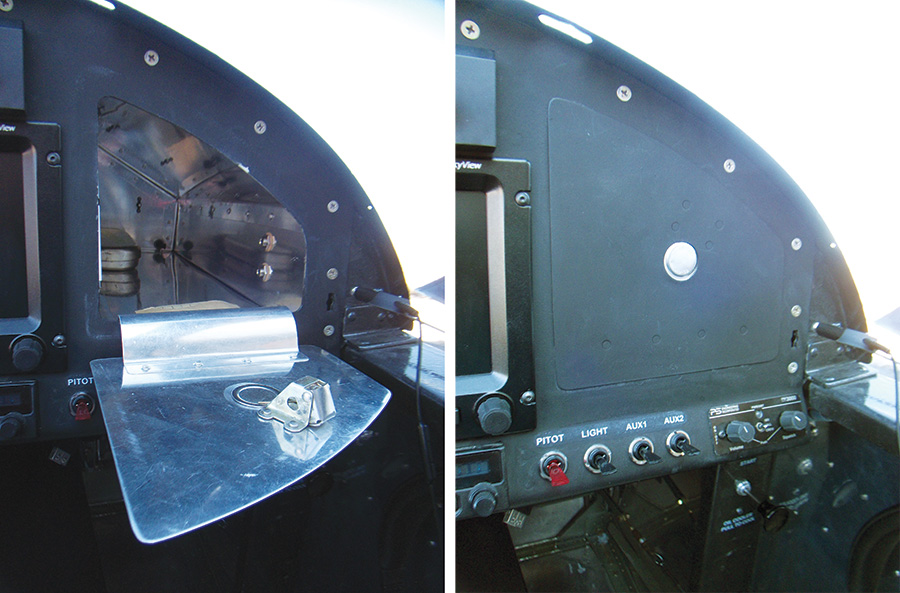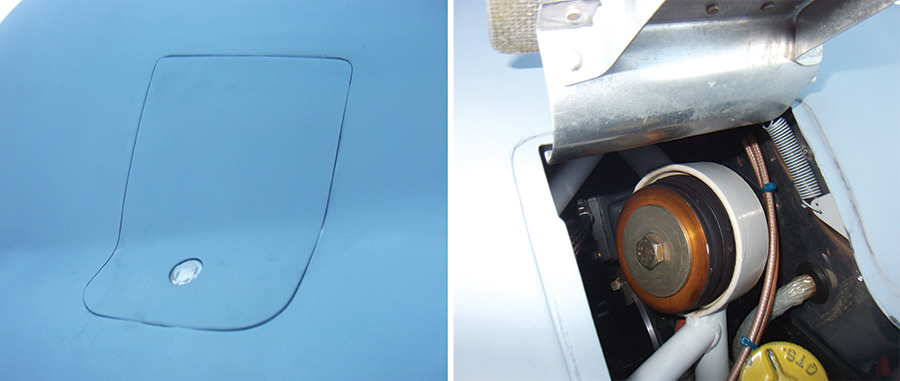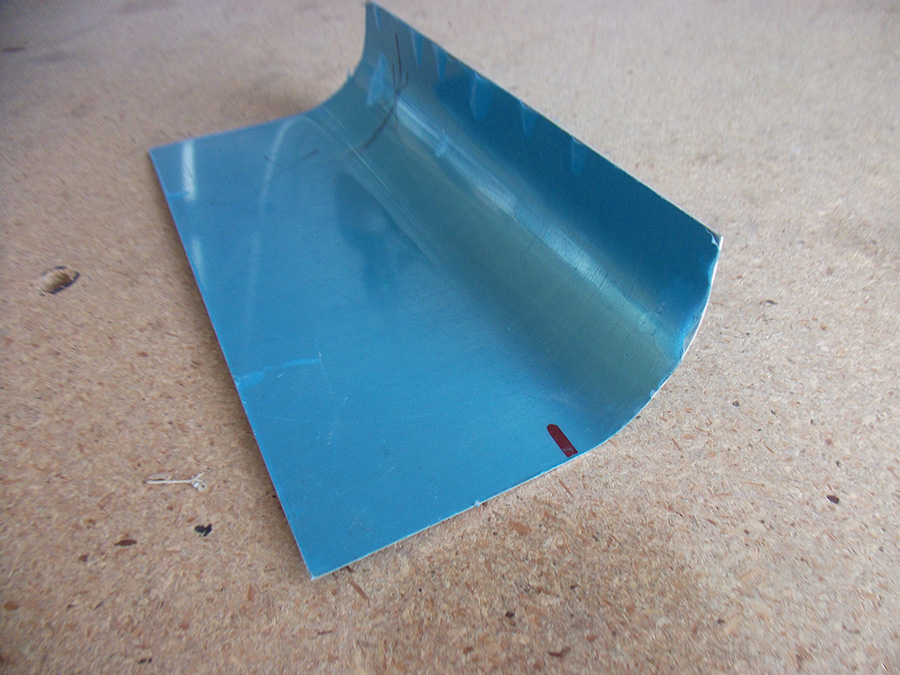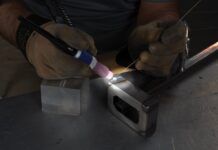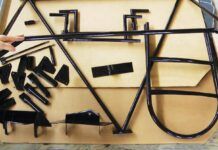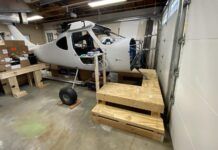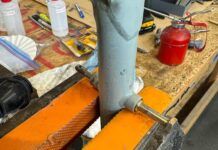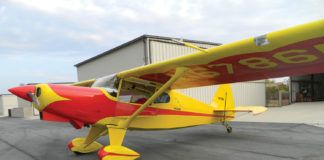Here are a couple of “trick” hinge mods that are simple to incorporate into certain hinged assemblies.
The Offset Hinge
Piano hinges are often used to attach non-moving parts, for example cowl halves or wingtip extensions (as opposed to moving applications such as a flap). Offsetting the hinge axis results in a more aesthetically pleasing, seamless gap (See Illustration 1).
Hinge ears visible between fuselage and lower cowl. Due to the proximity of the firewall, it was impossible to offset this hinge.
A typical hinge section callout is 1¼-inch wide MS20257-P3. Offsetting with P3 only leaves about 3/8 inch of material on which to rivet on the narrow side—not enough for a 2D edge margin for AN-4 (1/8-inch) rivets. No problem; simply cut a matching length of 1½-inch wide P4 hinge and use the wider P4 to bridge the gap while maintaining a sufficient edge distance. (You can still use the P3 on the other side to save an ounce or two.) When the hinge connects a fiberglass piece to a metal piece (say a wingtip fairing to a wing), I prefer to bias the offset towards the fiberglass; this gives the greater edge distance to the weaker fiberglass material.
TIP: Stagger your hinges so that the first eyelet to be threaded with the hinge pin is on the recipient hinge, i.e. the hinge of the main structure to which the fairing or cowl will be attached. That way you can thread your hinge pin into this first eye ahead of time so that it is ready to slide in once you wiggle the fairing into position.
Offset hinge used at wingtip. For offset hinges joining aluminum and fiberglass, offset towards the fiberglass if possible; this gives the larger edge distance to the weaker fiberglass. In this picture, a foam rib prevents the hinge from folding inward when the wingtip is slipped over the hinge for match drilling.
The Hidden Hinge
Oil access doors and glove compartment doors are two examples of places where you can use a hidden hinge. Sample geometry is shown in Illustration 2. Although hidden hinges are available from vendors (Avery Tools, Nonstop Aviation), this is a simple piece to fabricate. Note that Van’s Aircraft sells a piece of .032 aluminum stock (p/n F-473) that is intended for the RV-4 root fairing, but due to the pre-bent radius, is great for making light-duty hidden hinges.
TIP: Both of the hinges above can be used to join either metal or fiberglass parts. When riveting hinges to fiberglass, be sure (unless otherwise instructed by the manufacturer) to use “soft” -A rivets and not hard -AD rivets. Soft rivets are less likely to deform and damage the fiberglass when set. Being about the same hardness as fiberglass, they easily sand flush with the fiberglass.
Oil door with hidden hinge, open and closed. The door is held open by a spring attached to the hinge.
Photos: Eric Stewart



